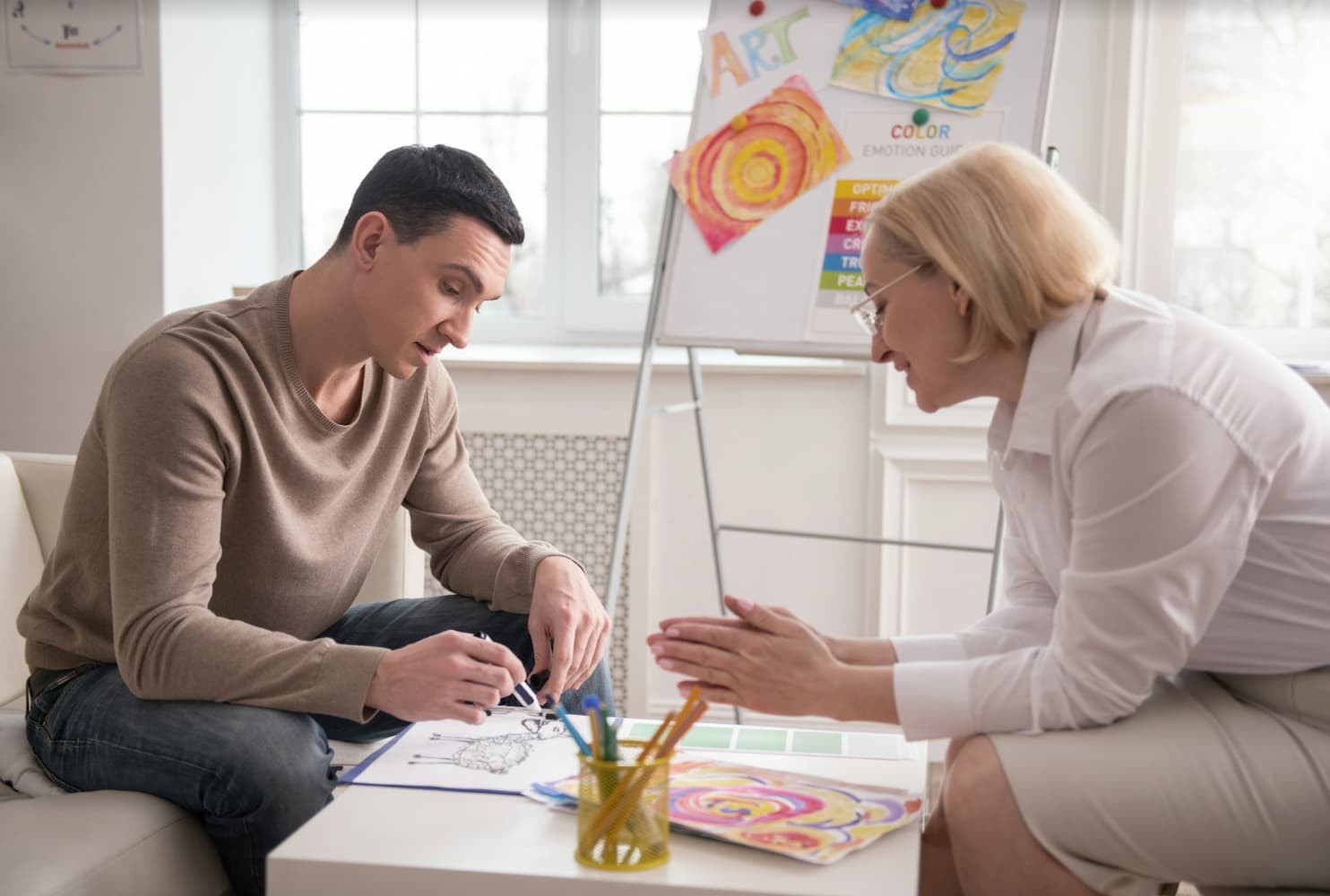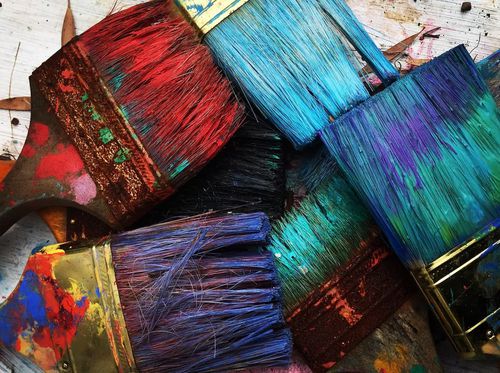What is art therapy?
Art therapy is a type of therapeutic intervention where clients use visual arts to achieve mental health diagnoses, better understand developmental disorders and allow for early intervention. People usually visit art therapists to be able to better communicate their feelings, explore their imagination, develop healthy coping techniques and improve their motor skills. They offer a valuable and long-last treatment to people who are currently dealing with:
- Anxiety
- Dementia
- Depression
- Eating disorders
- Fears and phobias
- Grief
- High blood pressure
- Muscle tension
- Stress
- Substance abuse
- Trauma
Sydney-based art therapists are also able to join a wide range of industry associations once they graduate:
- Australian, New Zealand and Asian Creative Arts Therapies Association (ANZACATA)
- Professional Association for Arts Therapy in Australia and New Zealand (ANZATA)
- Australian Association of Social Workers (AASW)
- Australian Counselling Association (ACA)
- Australian Register of Counsellors and Psychotherapists (ARCAP)
- Australian Clinical Psychology Association (ACPA)
- Australian Community Counselling Association (ACCA)
- Psychotherapy and Counselling Federation of Australia (PACFA)
- Australian Counselling
- Australian Psychological Society (APS)
Should you study art therapy?
Do you want to help people find meaning in their life experiences and help them better understand their problems through their artworks? If you answered yes, then art therapy is the perfect career choice for you. Contrary to popular belief you do not need an eye for art or creativity to become an art therapist. Instead, it is necessary that you possess the following skills:
- Good listening skills are vital throughout the whole session working with a client in order to be able to better analyse their sensory, emotional or physical state.
- High levels of confidentiality as the client will need to disclose highly sensitive personal and medical information.
- A strong problem-solving ability where you can effectively evaluate the effectiveness of the artistic and therapeutic interactions.
- Sound knowledge of different art tools in addition to a passion for continual learning in order to gain a better understanding of human behaviour.
If you see a correspondence between your personal interests and characteristics, continue reading to learn more about your course and the study options available in Sydney.
What are the course and study options for art therapists in Sydney?
Completing both an undergraduate and postgraduate qualification is vital if you want to become an art therapist within the Sydney region. For your undergraduate degree, you have a variety of options to choose from. This includes pursuing a Bachelor's degree in either social science, counselling, psychology, art or another related course. Once you complete your bachelor's degree, you will need to enrol in a Master's in art therapy or art education. Sydney course providers provide many delivery options for those of you who want flexibility while studying. This includes on-campus, online or blended learning modes.
During these courses, you will learn about art therapy, different procedures that art therapists use and how it will improve the mental health and psychological wellbeing of individuals. Furthermore, these theoretical lessons are taught by experienced art therapists who will teach you about how to assist clients going through psychological problems or emotional distress. Also, during your Master's program, you will need to complete 750 hours of professional work experience through a supervised clinical placement.
This already provides some courses that will help you kickstart your journey to becoming an accredited art therapist in Sydney. If you still have any questions after looking at all of your options, you can enquire with the art therapy institution directly.
What happens after you complete your art therapy course?
As a graduate in art therapy, you will need to register with the Australian, New Zealand and Asian Creative Arts Therapies Association (ANZACATA) in order to be eligible to work as an accredited art therapist.
There are many different opportunities that will open up to you once you finish your studies. At the start of their careers, art therapists tend to work in a specialised or multidisciplinary practice. Some of these workplace environments include aged care facilities, crisis centres, assisted living facilities, psychiatric wards, schools, clinical research facilities, domestic violence shelters and mental health agencies. Additionally, while practising you will need to maintain your credentials through meeting the training requirements of the Continuing Professional Education.
Additionally, you have the option of pursuing your own private practice. This allows you to have greater autonomy over your work and the management of your business. Natural Therapy Pages can assist you along this rewarding journey by letting you list either your face-to-face art therapy services or online sessions via the practitioner listing page. This will help drive traffic which leads to greater clients in the long term.








